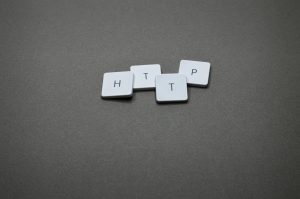Are you concerned about your financial data being exposed when paying for digital services? In today’s fast-paced online market, convenience often comes with risks. From streaming subscriptions to social media growth packages, countless platforms process payments daily. That’s why knowing how to safeguard your payment details is essential. Whether you’re purchasing cloud storage, premium software, or buying TikTok views, protecting your information should be a top priority. STLtoday TikTok views buying guide is important to read before purchasing TikTok views to boost your social media reach. Below are strategies will help you keep your transactions safe from cyber threats.
Use Trusted and Verified Platforms
 The first step in safe online payments is choosing platforms that have a proven reputation for security. Look for sites with HTTPS in the URL, which indicates data encryption during transactions. Trusted services often display secure payment badges or are integrated with reputable payment gateways like PayPal, Stripe, or Apple Pay. It’s better to pay slightly more for a service with strong security than to risk losing your sensitive details to a questionable provider.
The first step in safe online payments is choosing platforms that have a proven reputation for security. Look for sites with HTTPS in the URL, which indicates data encryption during transactions. Trusted services often display secure payment badges or are integrated with reputable payment gateways like PayPal, Stripe, or Apple Pay. It’s better to pay slightly more for a service with strong security than to risk losing your sensitive details to a questionable provider.
You can also check independent reviews to confirm whether the site delivers on its promises. Legitimate platforms will not request unnecessary personal details and will clearly outline their privacy and refund policies.
Use Virtual or Prepaid Cards
One effective way to shield your actual bank details is by using a virtual card or prepaid debit card for online transactions. Virtual cards generate a temporary card number linked to your account, but they keep your real number hidden. Prepaid cards, on the other hand, limit your exposure by only allowing transactions up to the amount you’ve loaded. If the details of these cards are stolen, the damage is minimal compared to having your main debit or credit card compromised.
Use Multi-Factor Authentication (MFA)
 Multi-Factor Authentication adds an additional security barrier beyond your password. When enabled, you’ll need to confirm your identity through secondary methods, like one-time code sent to your phone or email. Even when your password is compromised, MFA can block unauthorised users from accessing your payment accounts. Many payment processors, banks, and digital service providers now offer this feature, and enabling it takes just a few minutes.
Multi-Factor Authentication adds an additional security barrier beyond your password. When enabled, you’ll need to confirm your identity through secondary methods, like one-time code sent to your phone or email. Even when your password is compromised, MFA can block unauthorised users from accessing your payment accounts. Many payment processors, banks, and digital service providers now offer this feature, and enabling it takes just a few minutes.
Monitor Your Bank Statements Regularly
Staying proactive about your financial security means checking your account activity frequently. Many people only review statements monthly, but by then, fraudulent charges may have gone unnoticed for weeks. Set up transaction alerts through your bank’s app or online portal so you receive real-time notifications of purchases. If you spot suspicious charges, report it immediately to your bank or card provider. Acting fast can limit potential losses and help you recover funds more quickly.
Keep Your Devices and Software Updated
 Outdated devices and apps can leave you exposed to security vulnerabilities. Cybercriminals often exploit weaknesses in older systems to gain unauthorized access to sensitive data, including stored payment details. Regularly update the operating system, browser, and any apps you use for online transactions. Turn on automatic updates so you receive the latest security patches without delay. This step is especially important for smartphones, which are increasingly used for making digital payments.
Outdated devices and apps can leave you exposed to security vulnerabilities. Cybercriminals often exploit weaknesses in older systems to gain unauthorized access to sensitive data, including stored payment details. Regularly update the operating system, browser, and any apps you use for online transactions. Turn on automatic updates so you receive the latest security patches without delay. This step is especially important for smartphones, which are increasingly used for making digital payments.
Paying for digital services online can be both convenient and safe when you follow smart security practices. Choosing reputable platforms, enabling multi-factor authentication, keeping your devices updated, using virtual or prepaid cards, and monitoring your accounts regularly can significantly reduce your risk. By applying these five tips consistently, you can enjoy the benefits of digital transactions while keeping your payment details secure.